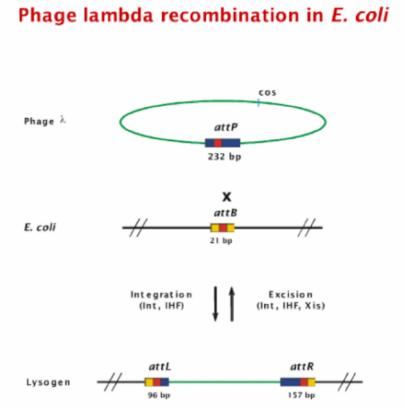Team:UC Berkeley/GatewayOverview
From 2008.igem.org
Why Use Gateway?
The first step of the layered assembly scheme involves the transfer of biobrick parts from an entry vector to a double antibiotic assembly vector. Traditionally, this would require a fairly work-intensive protocol requiring digestion, gel purification, ligation, transformation, and plasmid isolation. In addition to being more time-consuming, the aforementioned procedure is also suboptimal because it is difficult to scale-up.
The [http://www.invitrogen.com/site/us/en/home/Products-and-Services/Applications/Cloning/Gateway-Cloning.html| Gateway Cloning] approach developed by Invitrogen offers a more efficient and convenient alternative for parts transfer. Their procedure involves the enzyme-catalyzed exchange of parts flanked by specific recombination sites. Experimentally, it is a one-pot, room-temperature reaction where the plasmids, buffer, water and enzymes are added together. After the addition of another enzyme and a short incubation period to terminate the reaction, the entire mixture can be transformed directly. This one-pot approach with a fewer steps is much more suitable for large-scale experimentation.
Gateway Chemistry
In general, Gateway reactions involve the attB, attP, attL, and attR recombination sites and the integrase (Int), excisionase (Xis), and integration host factor (IHF) enzymes. Invitrogen adapted these components from the original lambda phage recombination system shown below.
The reactions required to perform each step of layered assembly can be outsourced to engineered E. coli. For example, to move a Biobrick part from an entry vector to an assembly vector usually requires digestion with the appropiate enzymes, gel purifying the correct fragment, then ligating the part with the assembly vector backbone. Using an E.coli with our Gateway device, this is reduced to just transforming the entry vector with the Biobrick part, lysing with the self-lysis device, and then using the lysate in a transformation. A protocol that cannot be easily automated is thus reduced to a series of liquid transfers and heating/cooling steps.
 "
"
